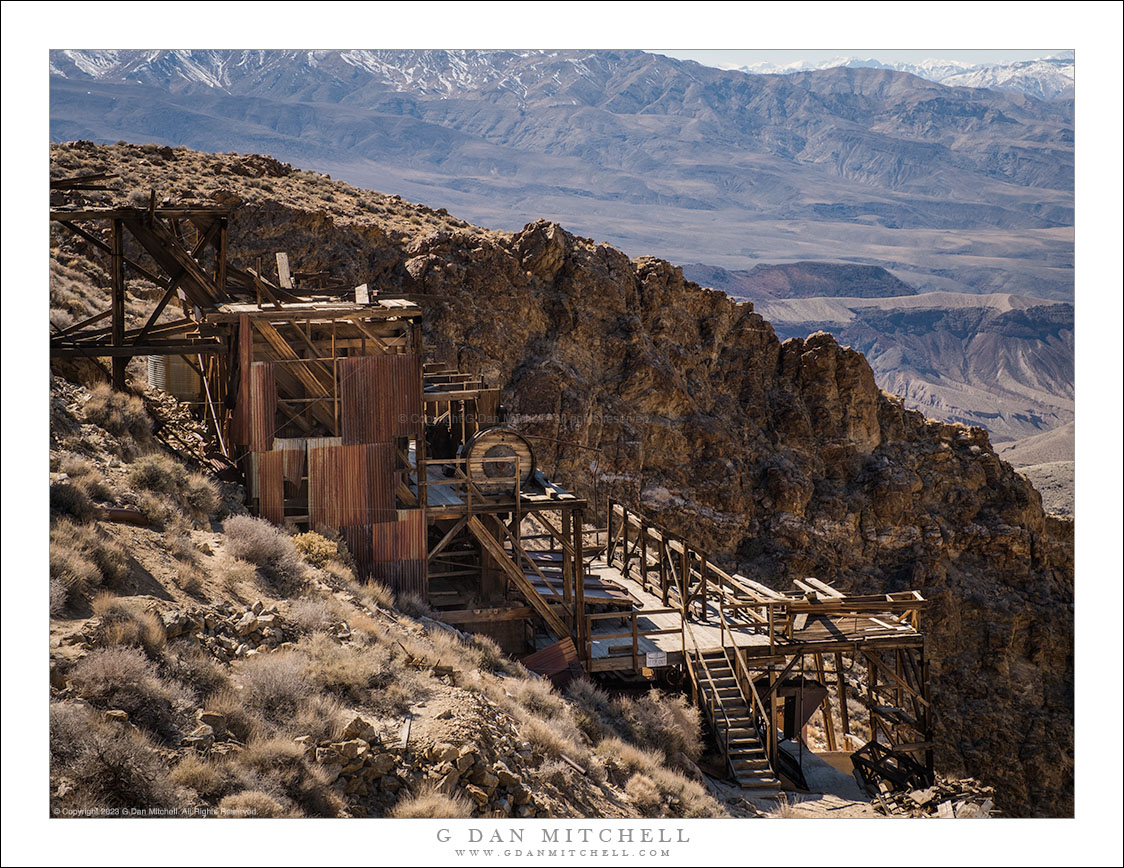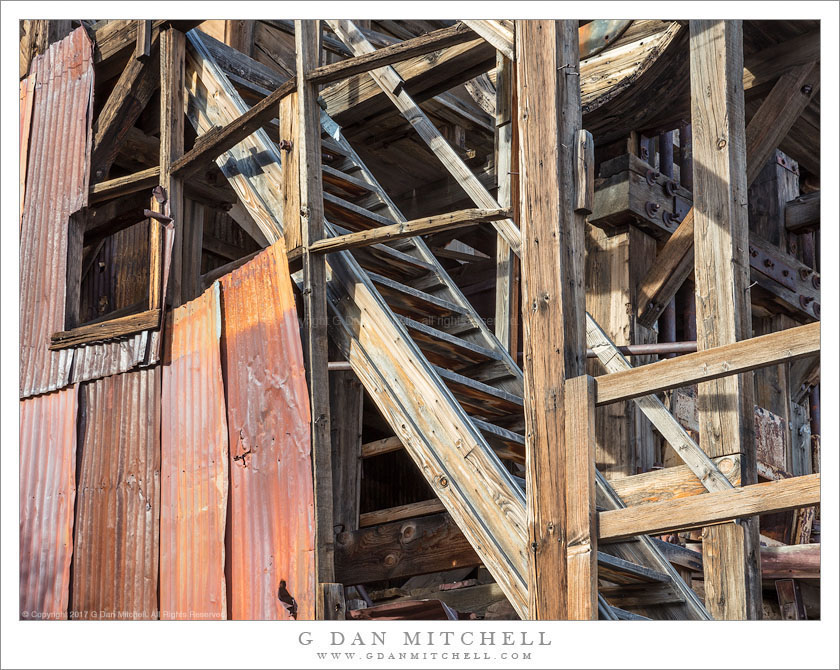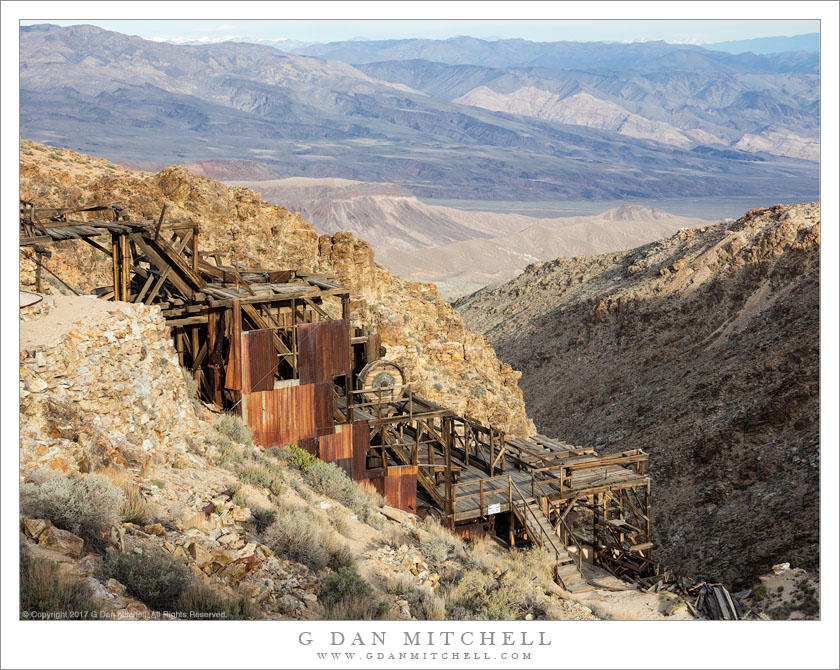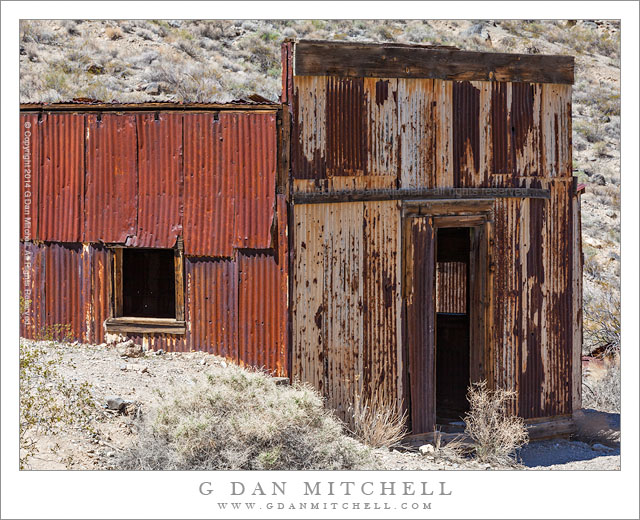
Abandoned Mill. © Copyright 2023 G Dan Mitchell.
An abandoned mill on a steep slope high in the Panamint Mountains.
For someone like me, the first instinct is to think of Death Valley National Park as being mostly wilderness, and then to associate that with the idea that it is a place of little or no human presence. In truth there’s virtually no place in the world where we have not left a mark… and there are many examples in this park. They range from evidence of long-ago native populations and their descendants who still live there to the rather astonishing number of old mining sites. No matter where you go in this park., you are bound to see these things.
In the latter category is the site of Skidoo, where there was once a real town and lots of mining and ore refining… in just about the most unlikely location imaginable. It was near the summit of high desert mountains, far from any paved roads. The ruins of the water-powered mill (an astounding story too long to relate here) sit on a steep hillside, overlooking a remarkable expanse of rugged desert terrain and mountains that extends to the distant peaks of the Sierra Nevada.
G Dan Mitchell is a California photographer and visual opportunist. His book, “California’s Fall Color: A Photographer’s Guide to Autumn in the Sierra” is available from Heyday Books, Amazon, and directly from G Dan Mitchell.
Blog | About | Twitter | Flickr | Facebook | Email
Links to Articles, Sales and Licensing, my Sierra Nevada Fall Color book, Contact Information.
Scroll down to leave a comment or question. (Click this post’s title first if you are viewing on the home page.)
All media © Copyright G Dan Mitchell and others as indicated. Any use requires advance permission from G Dan Mitchell.





